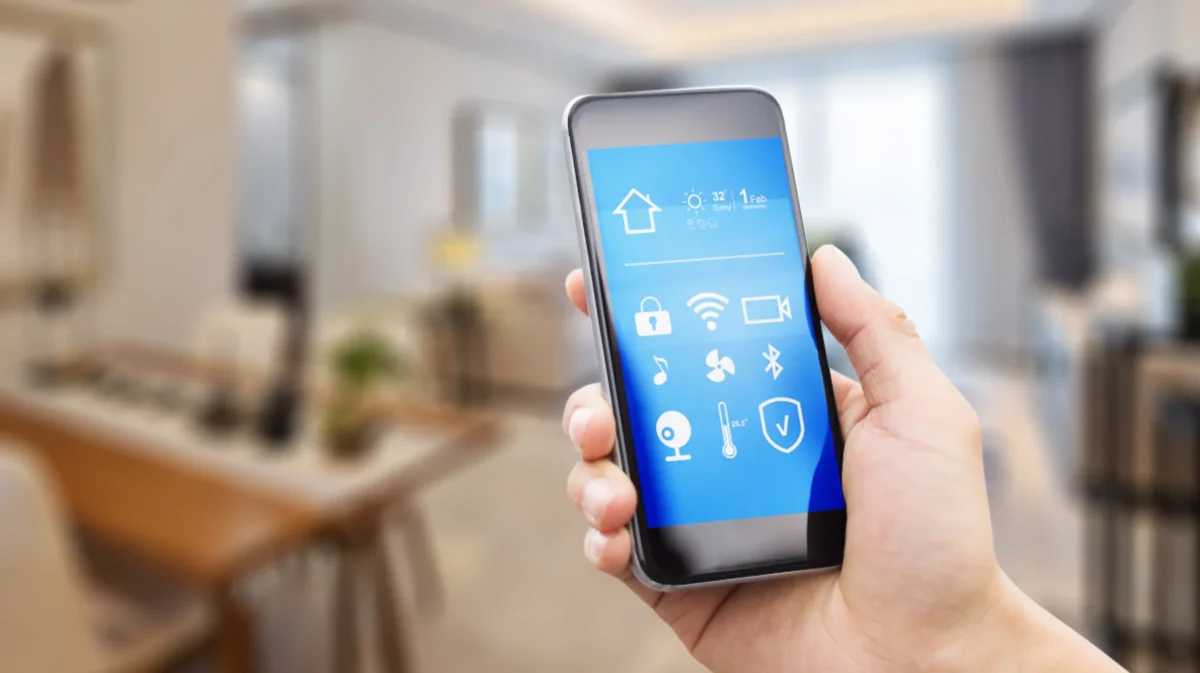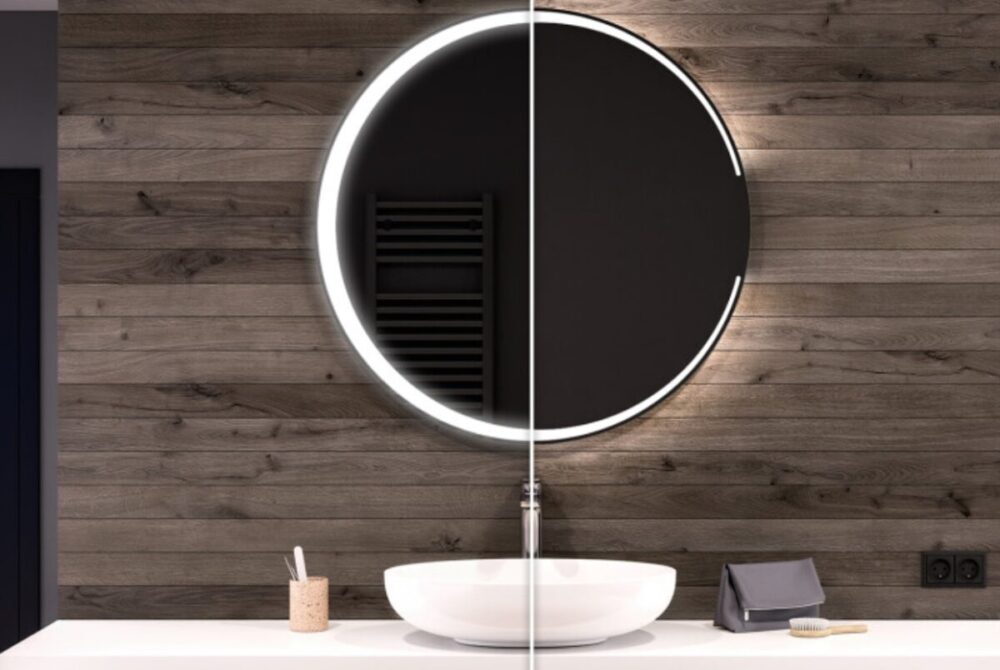There have been a lot of talks recently about smart home systems, which allow the automation of many processes that previously had to be managed manually by householders. In the following tutorial, we would like to discuss the most popular smart home applications. We encourage you to read on!
Smart home – is it the future or already the present?
Smart homes and apartments are definitely a sign of our times. Although, of course, we still don’t have human-like robots doing our ironing for us, more and more activities can be performed by smart devices. What’s more, the ability to implement automation is an added advantage that makes daily life in your four corners easier and more efficient.
The goal of individual devices, but also entire smart home installations, is to provide you with convenience, time and money savings, as well as priceless security. Do the available solutions work? Taking into account user feedback, by all means, yes! In the next few years, we can expect to expand the offer with more devices that can be controlled from mobile applications.
We recommend reading the article – The best apps to control all your smart home devices.
Dedicated apps, smart home, and automation – is it difficult to use?
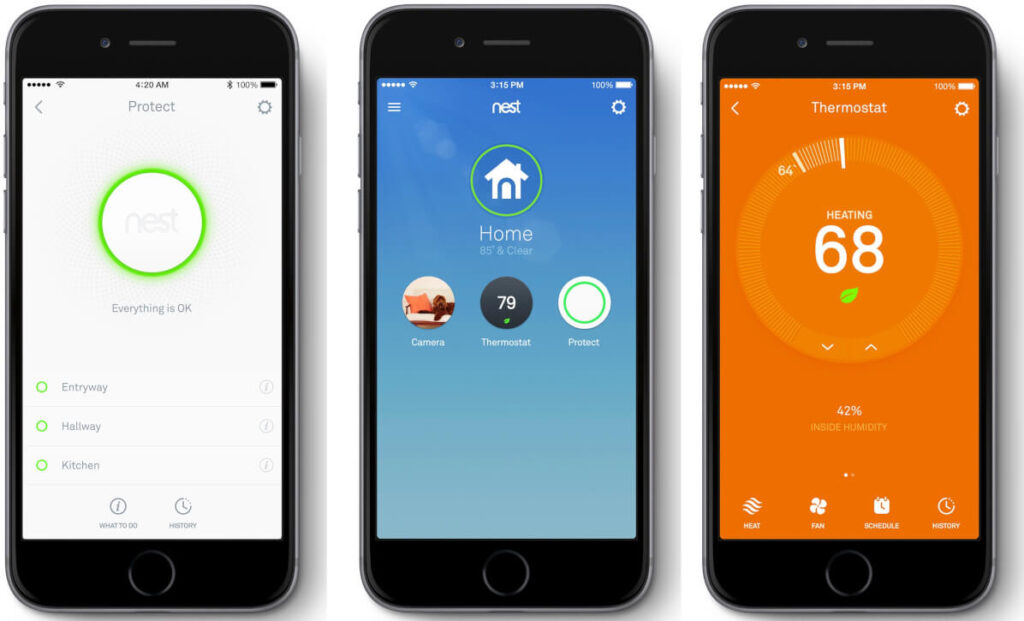
Many people wrongly run away from technological innovations for fear of encountering difficulties in operation. However, is there anything to fear? It is enough to convince ourselves of the fact that novelties are actually created to make our daily household chores even easier. Both devices and smart home applications are simple to use. It is not much different from the standard use of other software. Very often, mobile apps instruct the user step-by-step, so that he or she does not have any problems configuring a particular device or pairing equipment with each other.
Smart home apps – a brief description of each of them
To manage a smart home, you need a mobile application that ties all the devices together. There are at least a few noteworthy solutions on the market that are very popular. Smart home management apps are free and often supported by manufacturers of specific devices.
When deciding on the purchase of home appliances or consumer electronics, you should pay attention to what software environment the pre-selected model works with. While the equipment can connect to most mobile applications, it may not work with other devices. It is therefore important to choose products designed with a common management system in mind.
1. Tuya
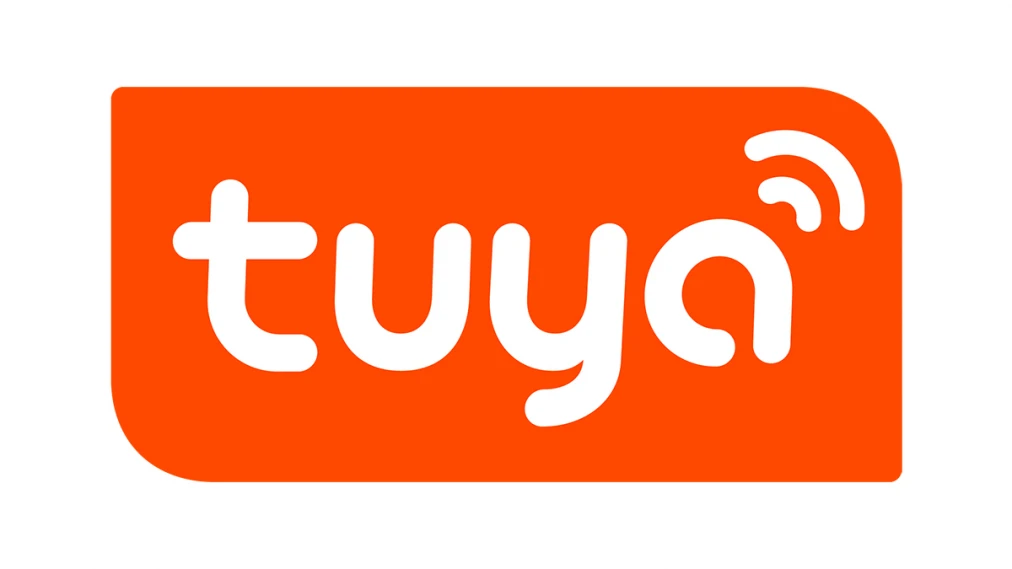
Let’s start with the Tuya application. This is software whose popularity has grown a lot among Polish users. This should be linked, among other things, to its user-friendly interface and ease of configuration. Navigating through the application will not cause trouble even for less advanced users. With the help of Tuya, it is possible to manage paired equipment that works on the basis of various forms of communication.
The application works with devices that use Bluetooth and Wi-Fi. The Tuya system actually consists of two programs, which in the past were quite different. Today they are simply two applications with identical capabilities.
The Tuya and Smarty Life applications allow the creation of so-called scenes. With this, it is possible to automate processes, which is the icing on the cake for smart homes. You can use a number of sensors as activators for specific actions. For example, if the motion sensor does not detect your presence, the TV connected to the smart outlet can be turned off after a certain period of time.
This is not only convenient but also has a cost-saving effect. If you use an iron instead of a TV, for example, it also affects the safety of the household. The Tuya and Smart Life apps allow grouping devices by the rooms they are placed in. It is also possible to turn equipment on and off remotely. There is also an operating schedule, which allows you to start a specific device on a selected day at a set time.
2. Google Home
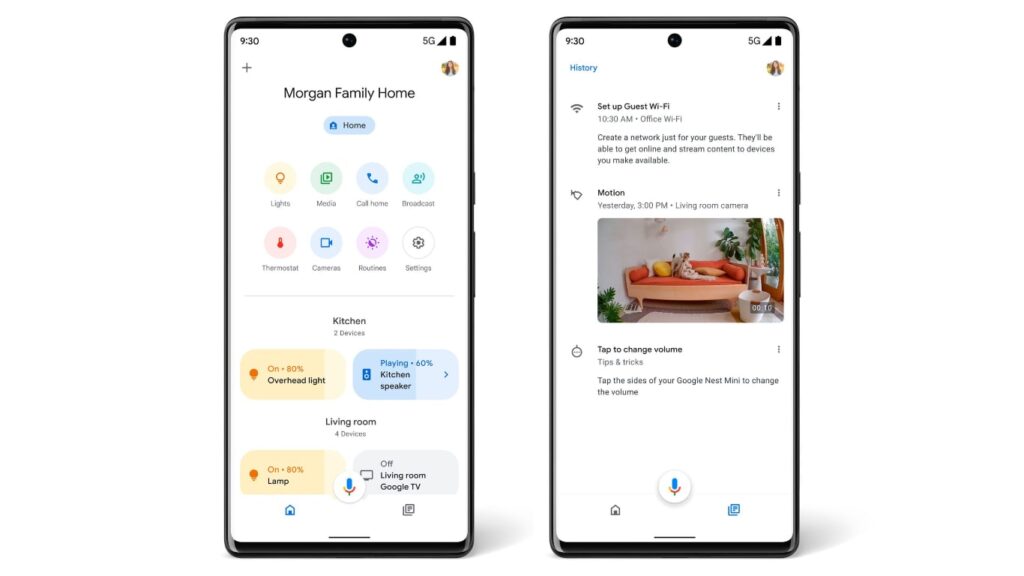
Of course, the list can not miss a proposal from the American technology giant. Google Home is a mobile application that is among the absolute top in the popularity ranking. This tool, like others from under this brand, is very intuitive to use and does not cause trouble even at first contact. In this case, it is also possible to sort the devices, due to the rooms in which they are located. Navigating through the app is further facilitated by tabs such as Home or Channel.
These are meant to shorten the path to the most important and frequently occurring processes so that you don’t have to search for them for a long time. Google Home also allows you to control the media that plays on the devices paired with the app. So you can switch songs, change the volume, and change settings for the sound source. The app, of course, works with Google Assistant, which allows you to issue voice commands. The software is being updated on a regular basis, so more improvements can be expected.
3. Amazon Alexa
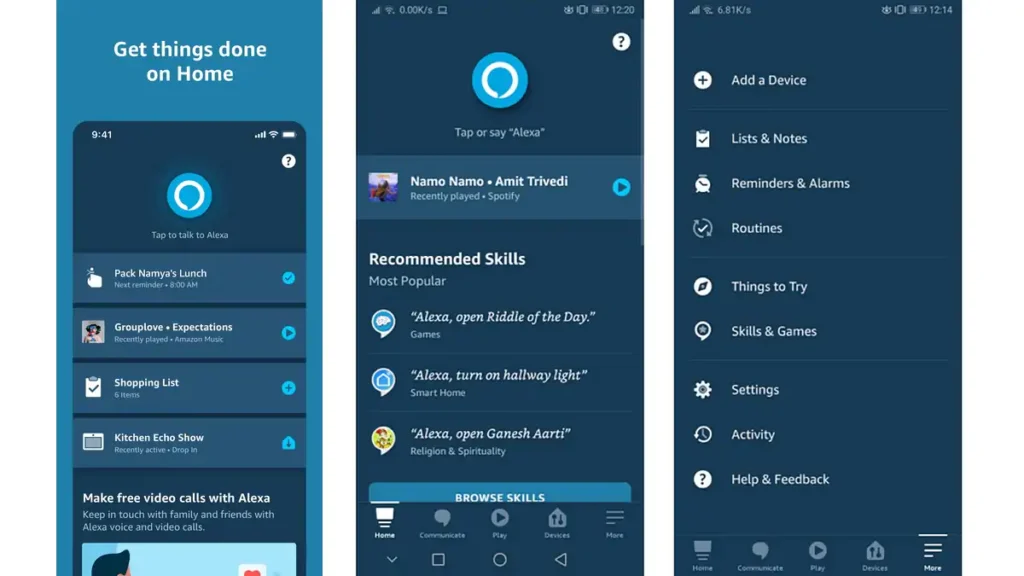
Google Home’s rival, is undoubtedly Amazon Alexa. The e-commerce giant has created its own home management environment. Alexa is easy to use and doesn’t take long to learn. It can be handled by the vast majority of users. Alexa allows grouping devices into individual rooms. In this way, control over equipment is better, and finding your way among the listed equipment is faster.
Amazon’s software also allows you to issue voice commands. Interestingly, it is also possible to use the equipment on an intercom basis. If you issue a command to the phone’s microphone, the message can be played back on a connected smart speaker that is located in another part of the house.
Alexa allows you to create automation routines. What does this consist of? For example, if you turn on the lights in the hallway when you get home, the air conditioner can also automatically turn on, and the outside blinds can be raised. This is just a simple example, as the scenes can be much more elaborate. This is exactly the kind of convenience that smart solutions are all about!
4. IFTTT
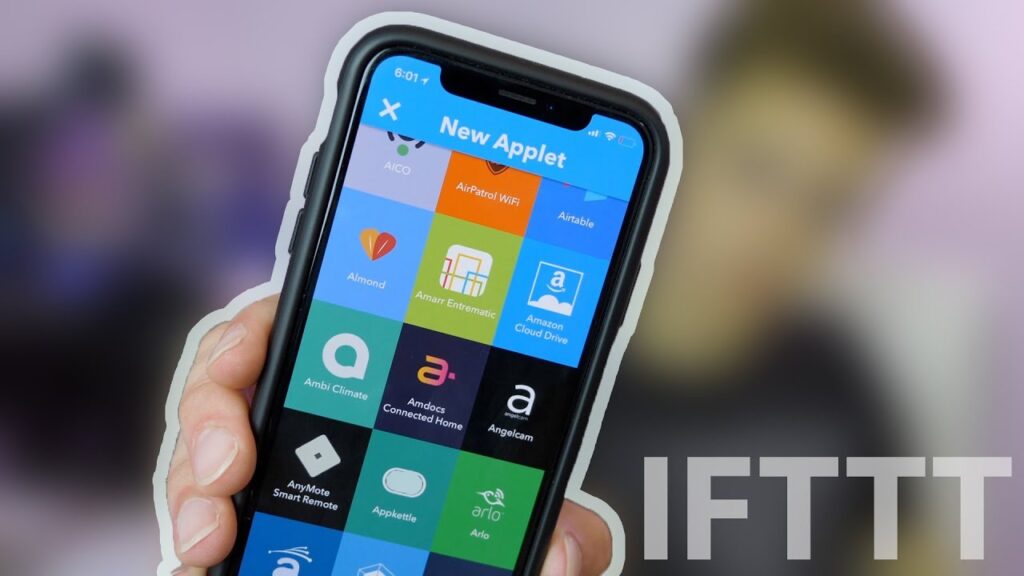
If we’re talking about process automation, this is the right time to present the IFTTT application. It stands for the full name “If This Then That.” The purpose of the application is not to enable direct remote operation of smart devices. The purpose of IFTTT is to enable elaborate automation scenarios. If enough time is spent on the setup, you can create really great schedules.
If your home has no shortage of smart devices and you have, in addition, twilight or motion sensors, the possibilities are quite numerous. You also need the imagination to define interesting scenarios and create functional solutions. Creating the scenarios themselves is not difficult and does not require any specialized skills, such as programming.
5. HomeKit
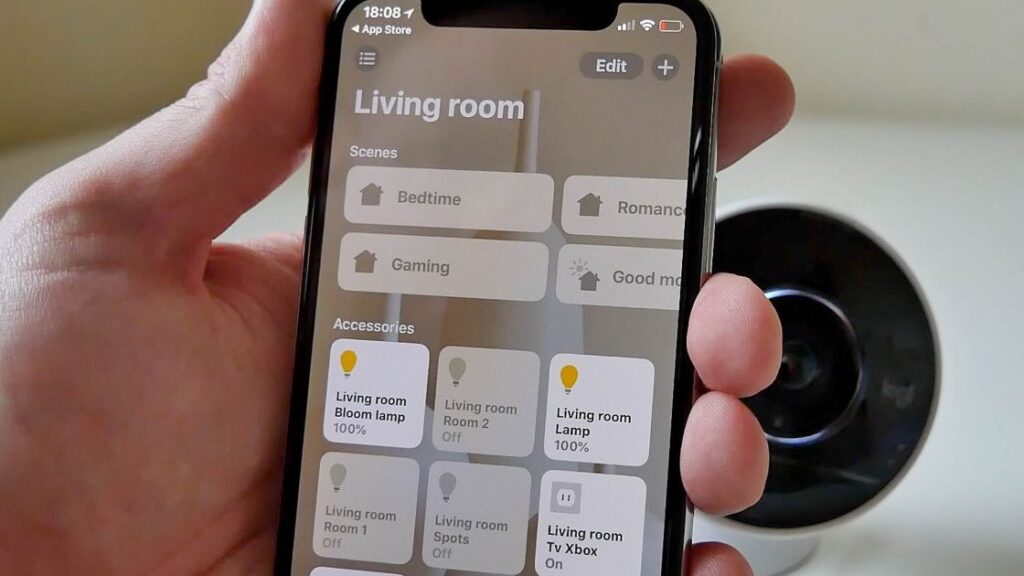
We conclude the list of the most popular smart home applications with Apple’s offering. HomeKit is perfectly optimized, like most of the manufacturer’s software. The app allows you to control many devices installed and used in homes. An interesting option is an ability to control multiple devices simultaneously. This means that several appliances can be turned on with a single click.
HomeKit also allows live viewing from IP cameras and grouping devices by room. There is also the possibility to introduce automation. Defining the right scenario, start by ticking off a trigger, such as a command that marks your departure from work.
Smart home applications are easy to use and you shouldn’t be afraid of operating problems. If you cope on a daily basis with other smartphone software, there will be no obstacles in this case either. We strongly encourage you to use smart solutions, which are a guarantee of convenience, security, and often also savings.

